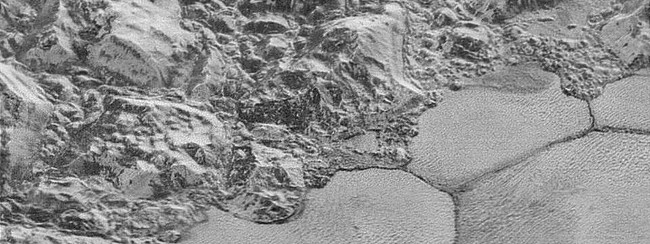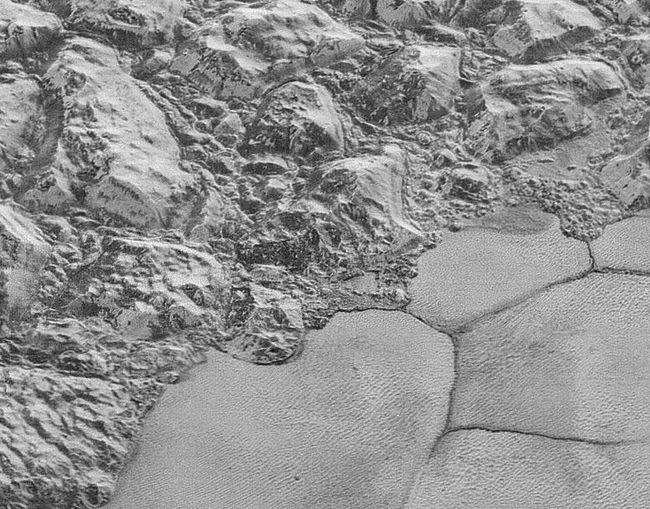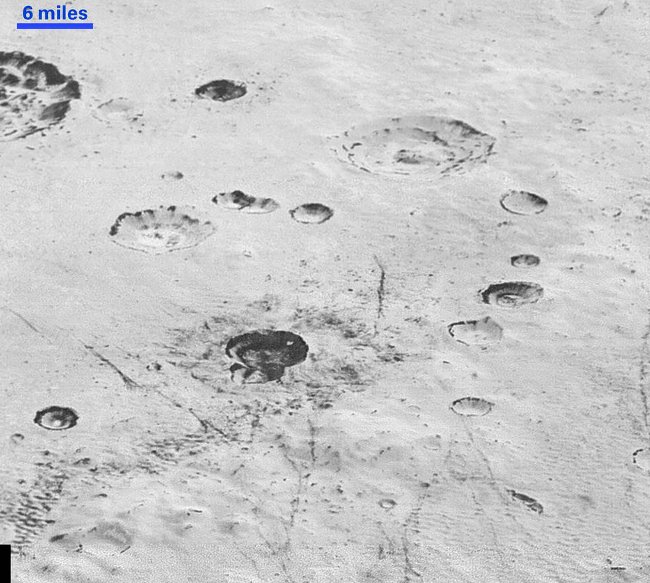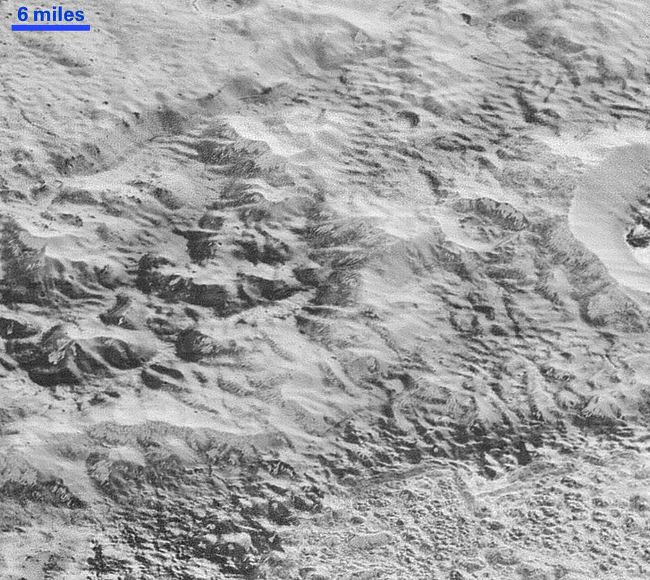NASA announces the sharpest image of Pluto's surface
New Horizons probes have just sent back to Earth a super-sharp image of the dwarf planet's surface and NASA immediately announced it to everyone.
Each 1 pixel of the image corresponds to 80 meters on Pluto. With this level of detail, we can clearly see the mountains, craters as well as the cold ice surface."These close-up images show the diversity of terrain on Pluto, while also demonstrating the power of our planetary exploration robots , " said John Grunsfeld, head of the Board of Scientific Projects. said the US Department of Aeronautics and Space.

Nearly 5 months since the historic flight was made, we have the closest and most detailed picture of Pluto.Sputnik Planum Plain , al-Idrisi rugged mountain range is what we see through the latest photo. According to Alan Stern, the scientific director of the New Horizons mission, this super-sharp image gives people a closer look at what really exists on the dwarf planet.


Earlier in July 2015, the probe approached Pluto at a distance of nearly 12,500km (from the dwarf's surface) and recorded a series of extremely precious images and data. However, because it is too far away from the Earth, along with the technology-modest equipment on New Horizons, the speed of transferring information about our planet is extremely slow. Therefore, it is expected that by the end of 2016, NASA scientists will receive all the collected data.

New Horizons is now moving further into space, leaving behind Pluto at a distance of 167 million kilometers and 5.2 billion kilometers from our planet. In the coming time, the ship will continue its journey to 2014 MU69, an inner object.
Pluto , also identified as 134340 Pluto, is the second heavy dwarf planet known in the Solar System (after Eris) and the tenth most massive object directly orbiting the Sun.
Formerly known as a planet, Pluto is now considered the largest member of a particular region known as the Kuiper Belt . Similar to other members of this belt, it consists mainly of ice with ice and is quite small in size: approximately one-fifth of the Earth's volume and one-third of the Moon's volume.
Since its discovery in 1930 until 2006, Pluto is still counted as the Solar System's ninth planet. However, at the end of the 20th century and the beginning of the 21st century, many objects similar to Pluto were discovered outside the Solar System, most notably the scattering disk object Eris, which is more massive than Pluto. Vuong 27%. On August 24, 2006 the International Astronomical Union defined for the first time "planet" . This definition does not include Pluto, it is reclassified by the International Astronomical Union as a member of the new type of dwarf planets along with Eris and Ceres.
- NASA announces unpublished Earth image
- NASA announces the latest proof of life on Pluto?
- NASA exploration robots capture the surface of Mars like Earth
- NASA announced an unexpected image of the
- See the sharpest color photos of Mars
- NASA announces beautiful galaxy image
- NASA announces picturesque satellite imagery
- NASA announces the best satellite image in 2011
- NASA announces the latest image of Jupiter
- First capture the smallest moon image of Pluto
- NASA announces super-stormy image of Big Red Spot on Jupiter
- NASA announces a great mission: Exploring the Sun in a hot 1,400 degree C hot pan
 Van Allen's belt and evidence that the Apollo 11 mission to the Moon was myth
Van Allen's belt and evidence that the Apollo 11 mission to the Moon was myth The levels of civilization in the universe (Kardashev scale)
The levels of civilization in the universe (Kardashev scale) Today Mars, the sun and the Earth are aligned
Today Mars, the sun and the Earth are aligned The Amazon owner announced a secret plan to build a space base for thousands of people
The Amazon owner announced a secret plan to build a space base for thousands of people Pluto has a vast ocean for the past 4.5 billion years
Pluto has a vast ocean for the past 4.5 billion years  Does the solar system have the 9th planet to own oceans and life?
Does the solar system have the 9th planet to own oceans and life?  Scientists discover ocean on Pluto
Scientists discover ocean on Pluto  The 5 'facts' you've ever learned in school turned out to be completely wrong
The 5 'facts' you've ever learned in school turned out to be completely wrong  What is the final border in science?
What is the final border in science?  Find 'hell gate' in myth
Find 'hell gate' in myth 